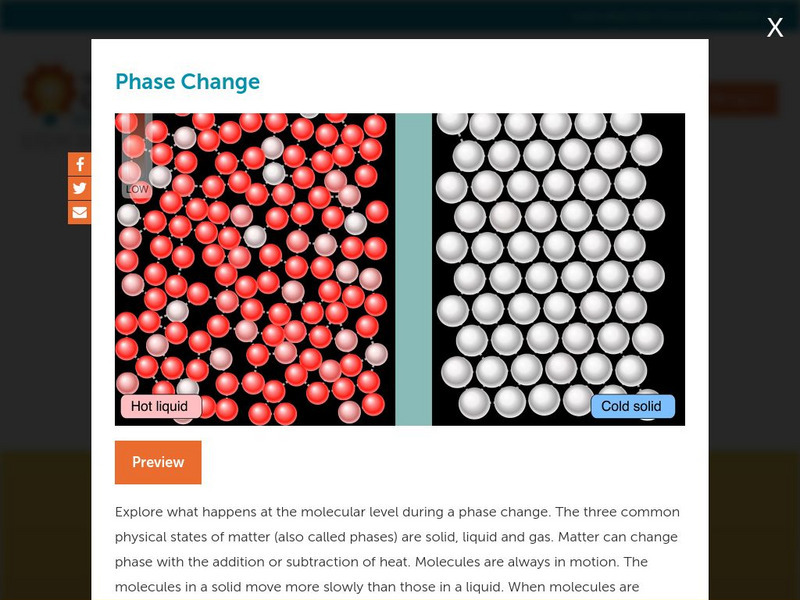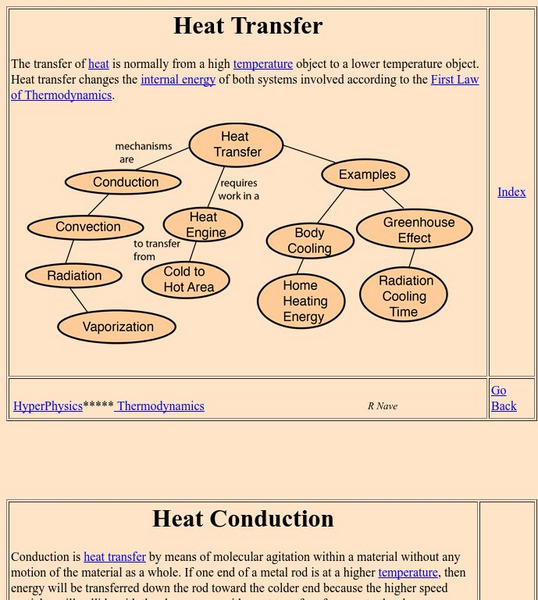Colorado State University
Csu: Heat Transfer Mechanisms
An excellent page from the Colorado State University with a heavy mathematical emphasis. Each form of heat transfer--conduction, convection, and radiation--is defined, compared, and contrasted. Mathematical equations governing the rates...
Colorado State University
Colorado State University: Heat Transfer Mechanisms
An excellent page from the Colorado State University with a heavy mathematical emphasis. Each form of heat transfer--conduction, convection, and radiation--is defined, compared and contrasted. Mathematical equations governing the rates...
TeachEngineering
Teach Engineering: Newton's Law of Cooling
Middle schoolers come to see the exponential trend demonstrated through the changing temperatures measured while heating and cooling a beaker of water. This task is accomplished by first appealing to students' real-life heating and...
Texas Education Agency
Texas Gateway: Heating and Cooling
A tutorial reviewing the states of matter and the effects of heating and cooling matter in the different states. (Note: some of the links may not load in the archived version of the site.)
ArtsNow
Arts Now Learning: Dance With Heating, Cooling, and Insulation [Pdf]
In this lesson plan, 3rd graders use movement and dance composition to aid their comprehension of heating, cooling, and insulation.
Exploratorium
Exploratorium: Science Snacks: Cool Hot Rod
This activity will show students how objects change size when heated and cooled. Students will observe a metal tube have expansion and contraction.
ArtsNow
Arts Now Learning: Cool / Warm Name Design Rubbings [Pdf]
In this lesson, 3rd graders reflect on who they are by listing their likes and dislikes, beliefs, hobbies, etc. They then create a rubbing of their name and add rubbings of objects they like, along with symbols and sketches. Next, they...
Curated OER
Kids Health: Heat Illness
Being out in the sun and heat, especially while exercising or participating in any physical activity, can lead to heat exaustion and heatstroke. Learn how to prevent getting sick while in the sun, and learn how to cool down if you feel ill.
Science Education Resource Center at Carleton College
Serc: Changing the State of Matter Using Heating and Cooling
In this lesson, students will investigate how different materials changed when heated or cooled. The process in developing the investigation will be inquiry based. Students will have the liberty in choosing the materials and devising how...
E-learning for Kids
E Learning for Kids: Greenland: How Can Heat and Cooling Change Materials?
Nanook wants to learn to cook. In order to cook, she first needs to learn how things can change when they are heated or cooled.
TeachEngineering
Teach Engineering: Stop Heat From Escaping
One way to conserve energy in a building is to use adequate insulation. Insulation helps keep the hot or cool air inside or outside of a building. Inefficient heating and cooling of buildings is a leading residential and industrial...
California Institute of Technology
Nasa: Cool Cosmos: What Is Heat?
Eight different types of energy that can convert into thermal energy are described. A movement activity and an experiment are included in this overview of thermal energy.
Concord Consortium
Concord Consortium: Stem Resources: Phase Changes
This activity reviews of states of matter, then relates them to atomic movement as it is affected by attractions between atoms and the addition of energy. Latent heat and evaporative cooling are also topics covered. Multiple-choice and...
Colorado State University
Colorado State Univ.: Heat Transfer Resistance Modeling
This site from the Colorado State University discusses the tranfer of heat by conduction and convection. Discussion centers around the application of these two heat transfer mechanisms to engines. The variables that effect the resistance...
ClassFlow
Class Flow: Heat
[Free Registration/Login Required] This flipchart investigates how heat is produced and the effects of heating and cooling and demonstrates how a change in temperature indicates a change in heat. Students will sequence objects according...
Science and Mathematics Initiative for Learning Enhancement (SMILE)
Smile: Passing the Heat Along
This lesson plan explores the way heat passes--transfers--through various conductors.
TeachEngineering
Teach Engineering: Passive Solar Design
Young scholars are introduced to passive solar design for buildings--an approach that uses the sun's energy and the surrounding climate to provide natural heating and cooling. They learn about some of the disadvantage of conventional...
American Chemical Society
Middle School Chemistry: Molecules in Motion
Students observe, on a molecular level, how heating and cooling affect molecular motion.
American Museum of Natural History
American Museum of Natural History: Grow Rock Candy
Students can carry out an investigation using sugar and water to determine whether heating or cooling a substance may cause changes that can be observed. This activity reinforces the ideas that the properties of materials can change when...
American Chemical Society
Middle School Chemistry: Air: It's Really There
Investigation shows that gas takes up space and has mass, and that the motion of gas molecules is affected by heating and cooling.
American Chemical Society
Middle School Chemistry: Temperature and Density
Observe how heating and cooling affect the density of water. Combine the concepts of temperature, molecular motion, and density to learn that hot water is less dense than room temperature water and that cold water is more dense.
American Chemical Society
Middle School Chemistry: Moving Molecules in a Solid
Students observe and describe, on the molecular level, how heating and cooling affect the motion of molecules in a solid.
Georgia State University
Georgia State University: Hyper Physics: Radiation Cooling of Body
Discusses the means by which the body regulates its temperature. The role of radiation in this process is explained. An equation for calculating the rate at which energy is transferred by radiation is presented. Also, an interactive...
Georgia State University
Georgia State University: Hyper Physics: Heat Convection
Using understandable words and exceptional graphics, this page describes the transfer of energy by means of the convection process. Contains several links to related topics.
Other popular searches
- Heating and Cooling
- Heating and Cooling Curves
- Science Heating and Cooling
- Heating and Cooling Curve
- Heating Cooling Curves
- Heating Cooling Curve
- Heating and Cooling Energy
- Heating and Cooling Systems
- Milk Heating and Cooling
- Heating and Cooling Water
- Heating Adan Cooling Curves
- +Heating and Cooling


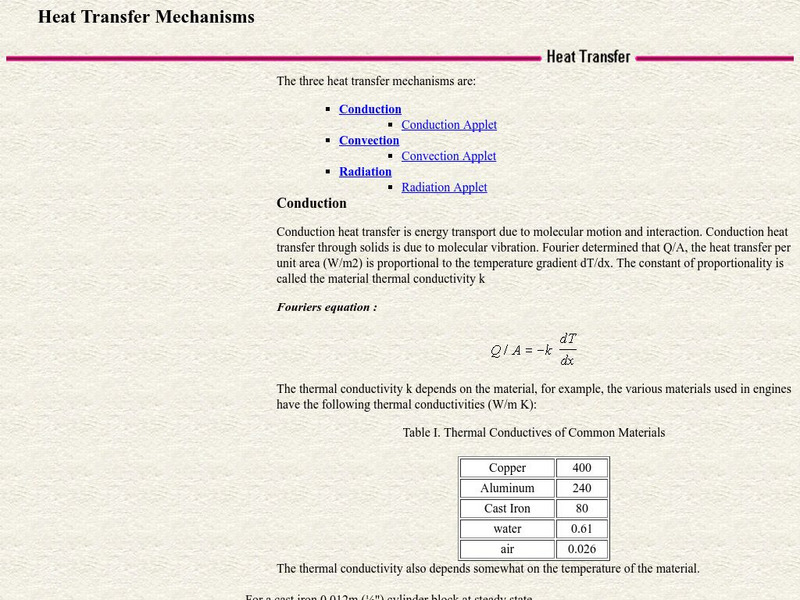
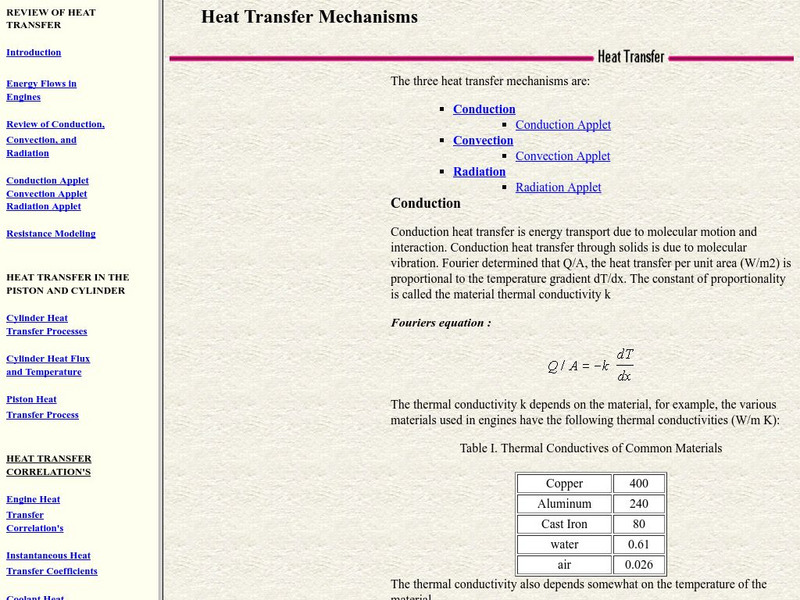
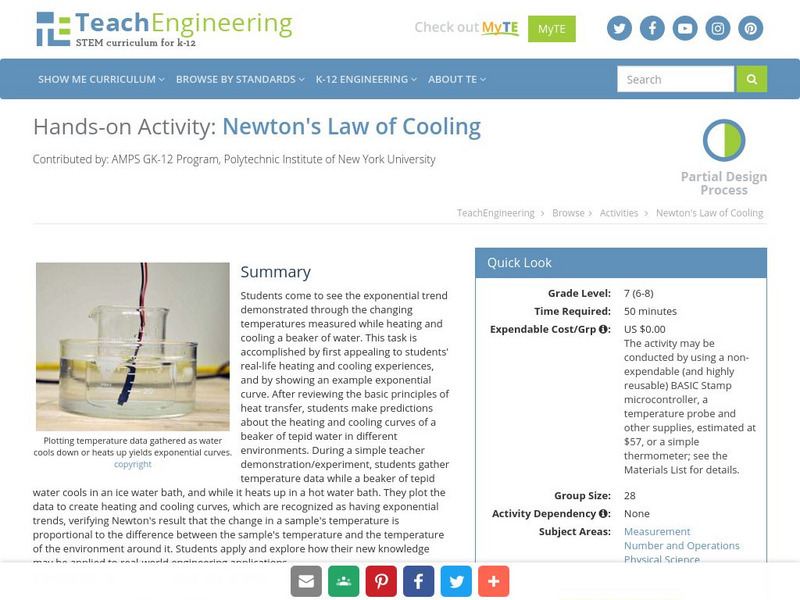

![Arts Now Learning: Dance With Heating, Cooling, and Insulation [Pdf] Lesson Plan Arts Now Learning: Dance With Heating, Cooling, and Insulation [Pdf] Lesson Plan](https://d15y2dacu3jp90.cloudfront.net/images/attachment_defaults/resource/large/FPO-knovation.png)






